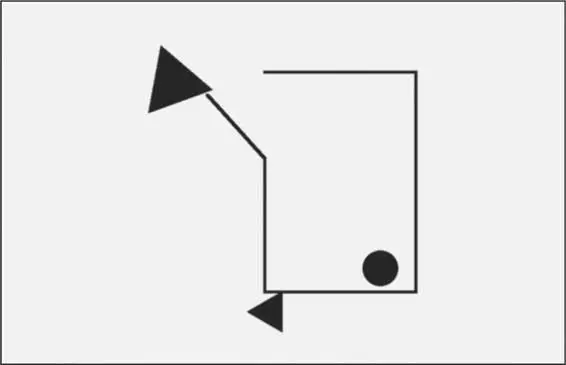Bruce Hood - The Domesticated Brain - A Pelican Introduction (Pelican Books)
Здесь есть возможность читать онлайн «Bruce Hood - The Domesticated Brain - A Pelican Introduction (Pelican Books)» весь текст электронной книги совершенно бесплатно (целиком полную версию без сокращений). В некоторых случаях можно слушать аудио, скачать через торрент в формате fb2 и присутствует краткое содержание. Год выпуска: 2014, ISBN: 2014, Издательство: Penguin Books Ltd, Жанр: Старинная литература, на английском языке. Описание произведения, (предисловие) а так же отзывы посетителей доступны на портале библиотеки ЛибКат.
- Название:The Domesticated Brain: A Pelican Introduction (Pelican Books)
- Автор:
- Издательство:Penguin Books Ltd
- Жанр:
- Год:2014
- ISBN:9780141974873
- Рейтинг книги:4 / 5. Голосов: 1
-
Избранное:Добавить в избранное
- Отзывы:
-
Ваша оценка:
- 80
- 1
- 2
- 3
- 4
- 5
The Domesticated Brain: A Pelican Introduction (Pelican Books): краткое содержание, описание и аннотация
Предлагаем к чтению аннотацию, описание, краткое содержание или предисловие (зависит от того, что написал сам автор книги «The Domesticated Brain: A Pelican Introduction (Pelican Books)»). Если вы не нашли необходимую информацию о книге — напишите в комментариях, мы постараемся отыскать её.
The Domesticated Brain: A Pelican Introduction (Pelican Books) — читать онлайн бесплатно полную книгу (весь текст) целиком
Ниже представлен текст книги, разбитый по страницам. Система сохранения места последней прочитанной страницы, позволяет с удобством читать онлайн бесплатно книгу «The Domesticated Brain: A Pelican Introduction (Pelican Books)», без необходимости каждый раз заново искать на чём Вы остановились. Поставьте закладку, и сможете в любой момент перейти на страницу, на которой закончили чтение.
Интервал:
Закладка:

Figure 3: Scene from Heider and Simmel 1944 animation
What is remarkable is that babies even as young as three months of age make exactly the same decisions about the different shapes. 23They look longer when a shape that has always helped suddenly starts hindering. Already at this age they are attributing good and bad personality characteristics to the shapes.
Are you thinking what I am thinking?
We not only judge others by their deeds but we also try to imagine what is going on in their minds. How do we know what others are thinking? One way is to ask them, but sometimes you cannot use language. On a recent trip to Japan, where I do not speak the language, I discovered just how much I took communication for granted. But before language, there had to be a more primitive form of communication that enabled humans to begin to understand each other. We had to know that we could share ideas, something that requires an awareness that others have minds and an understanding of what they might be thinking. The real quantum leap in the history of mankind that transformed our species was not initially language, but rather our ability to mind read.
Mind reading
I am going to surprise you with a little mind reading. Take a moment to look over the picture below, Georges de la Tour’s famous painting ‘The Cheat with the Ace of Diamonds’ (1635), until you have worked out what is going on.
In all likelihood, your eyes were instinctively drawn to the lady card player at the centre of the picture and, from there, you probably followed her line of gaze to the waitress and then to the faces of the two other players. Eventually you will have spotted the deception. The player on the left is cheating, as we can see that he is taking an ace from behind his back to change his hand into an ace flush of diamonds. He waits for his moment when the other players are not paying attention to him.
How did I know where you would look? Did I read your mind? I did not need to. To fully understand de la Tour’s painting, you have to read the faces and the eyes to work out what is going on in the minds of the players. Studies of the eye movements of adults looking at pictures of individuals in social settings reveal a very consistent and predictable path of scrutiny that speaks volumes about the nature of human interactions. 24Humans seek out meaning in social settings by reading others, whereas another animal wandering through the Louvre Museum in Paris where de la Tour’s masterpiece hangs would probably pay little attention to the painting let alone scrutinize the faces for meaning.

Figure 4: ‘The Cheat with the Ace of Diamonds’ by Georges de la Tour (1635)
How do we begin to mind read? We start with the face. Initially we pay attention to the lady at the centre because the face is one of the most important patterns for humans. As adults, we tend to see faces everywhere – in the clouds, on the moon, on the front of VW Beetles. Any pattern with two dots for eyes that has the potential to look like a face is immediately seen as one. It may be a legacy of an adaptive strategy to look out for faces wherever they might be just in case there is a potential enemy hidden in the bushes, or it may simply be that because humans spend so much time looking at faces, we see them everywhere. 25
When we look at faces, we concentrate on the eyes, which explains why this region is responsible for generating the most brain activity in observers. 26Eyes serve several communicative purposes because they are directed to pick up visual information and, in doing so, reveal when and where someone’s attention is focused. Gaze behaviour is also a precursor to communication, which is why we try to catch someone’s eye before we strike up a conversation. By watching someone else’s eyes, you can work out what is most interesting to them and when it is appropriate to speak. In face to face conversation, the person listening spends roughly twice the amount of time looking at the speaker, who will periodically glance at the listener, especially when they are making an important point or expecting a response. 27We can gauge how much interest or boredom they are expressing and whether they have been registering the important messages by watching their gaze behaviour.
Not only do we seek out the gaze of others but it can also be difficult to ignore, especially if they are staring at us. This is why it is hard for soldiers standing to attention on a parade ground to maintain a fixed stare ahead of them when the drill sergeant, only inches away, stares at them and commands ‘Don’t eyeball me, soldier!’ This focus requires a lot of discipline. Mischievous tourists notoriously try to make the guards on sentry duty outside Buckingham Palace lose their concentration by getting the soldier to look at them. Trying to avoid eye contact with someone in front of your face is almost impossible. Likewise, if a speaker you are listening to suddenly looks over your shoulder as if to spot something of interest, then you will automatically turn round to see what has captured their attention. This is because most of us instinctively follow another person’s direction of gaze without even knowing it. 28
Even infants follow eye gaze. When I was at Harvard, I conducted a study where we showed ten-week-old babies an image of a woman’s face on a large computer monitor. 29She was blinking her eyes open, staring either to the left or right. The babies instinctively looked in the same direction, even though there was often nothing to see.
Gaze monitoring works so well because each human eye is made up of a pupil that opens and constricts to allow varying levels of light into the eye, and a white sclera. This combination of the dark pupil set against the white sclera makes it very easy to work out where someone’s eyes are pointing. Even at a distance, before we can identify who someone is, we can work out where they are looking. In a sea of faces, we are quickest to spot the face whose eyes are directed at us. 30
Direct staring, especially if prolonged, triggers the emotional centres of the brain, including the amygdalae, which are associated with the four Fs. 31If the other person is someone you like, the experience can be pleasing, but it is distressing if they are a stranger. Newborns prefer faces with a direct gaze 32and, as we saw earlier, if you engage with a three-month-old baby by looking at them, they will smile back at you. 33However, as children develop, patterns of gaze behaviour change because there are cultural differences in what is regarded as acceptable behaviour.
Cultural norms explain why staring at strangers is common in many Mediterranean countries, but makes foreign tourists often feel uncomfortable at being gawked at when on holiday. 34Likewise, direct eye contact, especially between someone of lower status with someone of higher status such as a student and teacher in Japanese culture, is not considered polite. Japanese adults perceive direct gaze as angrier, unapproachable and more unpleasant. 35Whereas in the West, we tend to think of someone who does not look you in the eye during a conversation as being shifty and deceitful.
When individuals from different cultures with different social norms get together, it can be an uncomfortable exchange as each tries to establish or avoid eye contact. This cultural variation shows that paying attention to another’s gaze is a universal behaviour programmed into our brains at birth, but it is shaped by social norms over the course of our childhood. Our culture defines what are considered appropriate and inappropriate social interactions, influencing our behaviour through emotional regulation of what feels right when we communicate.
Читать дальшеИнтервал:
Закладка:
Похожие книги на «The Domesticated Brain: A Pelican Introduction (Pelican Books)»
Представляем Вашему вниманию похожие книги на «The Domesticated Brain: A Pelican Introduction (Pelican Books)» списком для выбора. Мы отобрали схожую по названию и смыслу литературу в надежде предоставить читателям больше вариантов отыскать новые, интересные, ещё непрочитанные произведения.
Обсуждение, отзывы о книге «The Domesticated Brain: A Pelican Introduction (Pelican Books)» и просто собственные мнения читателей. Оставьте ваши комментарии, напишите, что Вы думаете о произведении, его смысле или главных героях. Укажите что конкретно понравилось, а что нет, и почему Вы так считаете.











